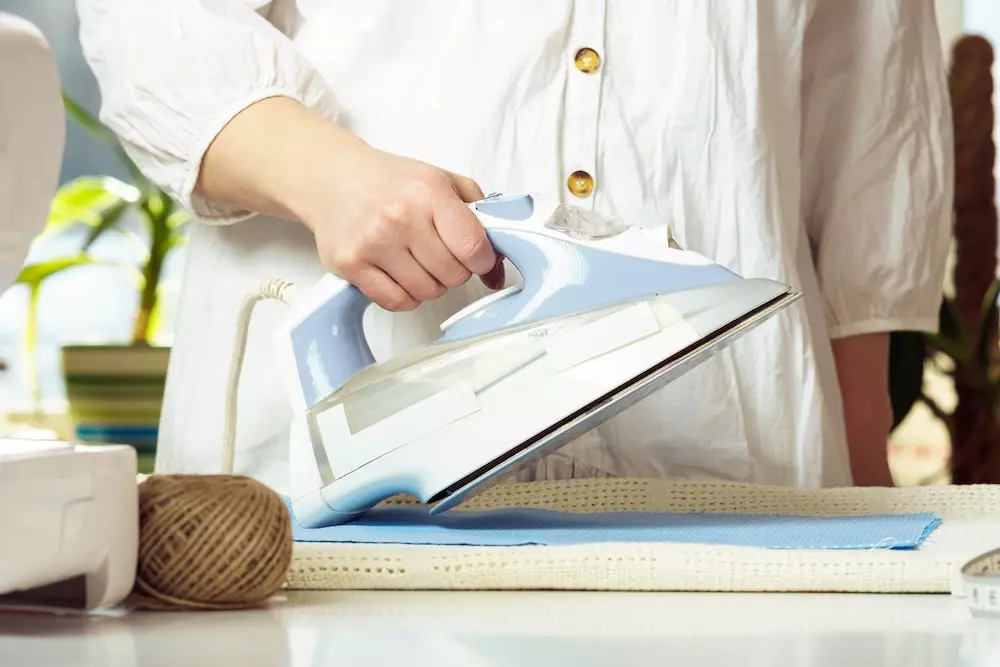Why Pressing Is an Important Process to Finish Your Garment
2023-05-30
There are many important steps in the garment-making process, from choosing your fabrics to stitching the pieces together — and beyond. Once your garment has been assembled, sewists should never forget to press their garment.
What Is the Pressing Process?
Garment pressing is the act of removing unwanted wrinkles and creases from a sewing project. The type of tool that a sewist will use to press their garment will depend on the fabric that the garment is made from.
This step is not essential to the integrity of the garment, but it does have a major effect on the aesthetic value of the piece. When garments have unintentional wrinkles or creases, they can look less professional. While this may simply provide an undesirable outcome for DIY crafters, it can have a serious impact on professionals in the garment industry.
The Essential Components of Pressing
Before you can learn how to press a garment, it’s important to understand what components to use to remove creases and wrinkles from fabric. This will help you to accurately press your garments based on the fabric they are made from. Not all pressing processes will use all four of these components.
Heat
Heat is essential for most garment pressing processes. When heat is applied directly to fabric, it allows the fibers’ creases or wrinkles to soften into a neutral position.
This in turn works to stabilize the garment’s appearance into a flatter finished product free of unwanted wrinkles. However, it is essential to use caution when applying heat to garments, as too much heat can damage certain fabrics.
Moisture
Moisture can be an important part of the garment-pressing process for some fabrics, including wool, cotton, and rayon. During pressing, moisture is added in the form of steam. Depending on the specific fabric blend, some garments will need high-pressure steam, while others will react better to low-pressure steam application.
Certain fabrics, especially synthetics, do not respond well to moisture and should only have heat applied to them to help get rid of wrinkles. If you do use moisture in your pressing process, start with small amounts and gradually increase as needed so you don’t apply too much to the garment and create color bleed or shrinking.
Pressure
Whether a fabric needs only heat or both heat and moisture during pressing, pressure is an essential component of all pressing processes. The fibers of the fabric will not be able to soften out of their creased shape if enough pressure is not applied along with heat and moisture.
Vacuum
Once the necessary heat or moisture has been applied to a garment, your pressing tool should have a vacuum setting where cool air is drawn through the garment. This helps reset the fabric’s fibers into their new position and remove any excess moisture. The vacuum step is particularly important for garments made of wool, cotton, nylon, and polyester.
What Are the Types of Pressing?
There are two distinct classifications of garment pressing:
- Under pressing
- Top pressing
Under-pressing occurs while the garment is being assembled, whereas top pressing only happens once the garment is completed. Using both methods is the best way to make sure all unwanted creases are removed from a garment. However, some types of garments specifically require under-pressing as well as top pressing, including suit jackets, coats, and trousers.
Why Garment Pressing Is Important
Removing unwanted wrinkles is one of the most important aspects of garment pressing. However, this process has other benefits too.
During the pressing garment process, desired creases and wrinkles can be intentionally added to enhance the finished look. A sewist can also manipulate the shape of a garment during pressing to better fit the body or hide imperfections on the garment itself — such as puckered seams.
Final pressing can additionally have an aesthetically pleasing effect on garments. Not only does it remove wrinkles from where they shouldn’t be, but it also creates an overall glossy shine, boosting the item’s visual value.
Pressing Equipment and More Sewing Essentials at GoldStar Tool
Are you looking for the right garment-pressing tools for your sewing projects? We’ve got all the pressing equipment you need — along with sewing machine parts and accessories, DIY sewing machine projects, and more — at GoldStar Tool.





